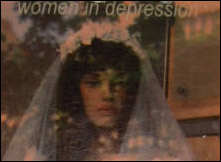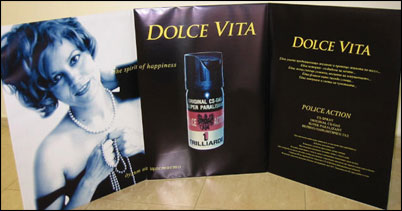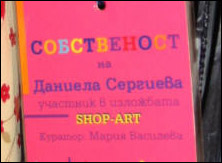Women on the Edge of Feminism
“The 8th of March” women’s group has existed in the cultural horizon of Bulgaria since 1997 when a few female artists got together to react against the “Erotica” exhibition in which only male artists were invited to take part. Little by little, spontaneity gave way to organized work and, since then, eight exhibitions, a few international projects, catalogues, brochures, and a CD have been issued.
“The 8th of March” carries all the marks of the formation that appeared at the end of the 20th century, a time when “borders” were not respected (particularly in a country trying to be excluded from the Shenguen list). Even the group’s members are not the same, as they vary according to specific circumstances or the level of tolerance inside the group. Often, the “personal” gains ascendancy over the “professional” and is interpreted not only as a sign of “femininity” but also as a sign of contemporaneity; that is, when the common cause gives way to the individual cause. The motley character of “The 8th of March” also concerns more profound parts of the nature of the group. Its face does not have symmetrical features. Some members view themselves as radical feminists, others dislike that term, and a third party seems less than eager to discuss the issue. However, the group persists, motivated by curiosity, friendship, and the emptiness of the Bulgarian art-stage. In typical post-style, “The 8th of March” does not have either a clearly defined platform or its own program. Rather, it prefers to give a reflective reaction to the situations and to go with the tide than to attack with a sword sharpened in advance.
Although created by people in their 30s and 40s, the group attracts very young authors who enthusiastically contribute the fresh and vigorous perspectives of their generation. Contemporary Bulgarian art, we must keep in mind, has overcome relatively quickly the shock from the change of the closed-system “painting-sculpture-graphics” with the help of the new media. However, the particular focus on a women’s group becomes complicated by partial knowledge of feminist theory and practice. Added to this is the socio-cultural situation, which does not tolerate such “deviations.”
Hence, the kaleidoscopic character of the “8th of March” group has its origins and its reasons for existence. According to so-called world standards, the group pursues controversial ideals. Some are trying to protect the idea of a specifically female style in art, the essentialism of which would make radical feminists protest in anger. Yet such a style is needed in a culture where male painting has been the standard of imitation for an entire decade.
 Finally, then, the created image reflects a number of complexities but is reflective of the situation in Bulgaria. One great success is the retaining of the reflection viewing the particular circumstances and not the persecution of traditional world models. However, the group exists in constant change and its actions have always been successful despite, or perhaps because of, the criticisms they provoke.
Finally, then, the created image reflects a number of complexities but is reflective of the situation in Bulgaria. One great success is the retaining of the reflection viewing the particular circumstances and not the persecution of traditional world models. However, the group exists in constant change and its actions have always been successful despite, or perhaps because of, the criticisms they provoke.
“SHOP-ART” is the latest action of the group. “Women on the Market” is an exhibition-project aimed to “attack” directly the active public spaces in the center of Sofia (shops and pedestrian zones in the underpass between the Central Universal Shop and the Sheraton Hotel). The attack concerns the artistic interpretation of the philosophical-social-ethical perception of woman as “shopping animal” and as merchandise. The other part of the idea concerns the art out of the gallery in a free competition between it and commerce. Daniela Kostova has transformed herself in posters into a pop-folk singer: indeed, a mass product gaining a threatening popularity in recent years. Perhaps she wants a taste of popularity and the love of the people that she will never have simply as an artist.
These “values” are the foundation of Alla Georgieva’s “New Fragrance.” She has brought to the market the last model of a gas flask for self-defense. Tania Abadjieva has viewed the cosmetic products from another angle, emphasizing in a poetic video-film the connection between the popular deodorant shape and male genitalia. Boriana Dragoeva has also created a dual character in her cartoon, “Vibroelephant,” which suggests woman’s eternal split between the childish and the perverse. Daniela Sergieva has left hangers, clothes, underwear, and bags with their respective Labels, thereby demonstrating her taste and desires. Nadejda Oleg Liahova enclosed a beggar, singing and playing on accordion, behind a glass screen. Sylvia Lazarova put an enormous photograph of three gypsies holding boards with the words Faith, Hope, Love under the statue of Sofia (their biblical mother and patron of the city). Adelina Popnedeleva made the audience “consume dreams” in the shape of cakes with the images of brides and the American actor Brad Pitt. By placing their works in the underpass, the female artists “exposed” themselves on one side, but they were also, more importantly, in the position of observing the potential audience. They observed and were observed. This “exchange” and the accumulated impressions in that process will no doubt give rise to future projects.






